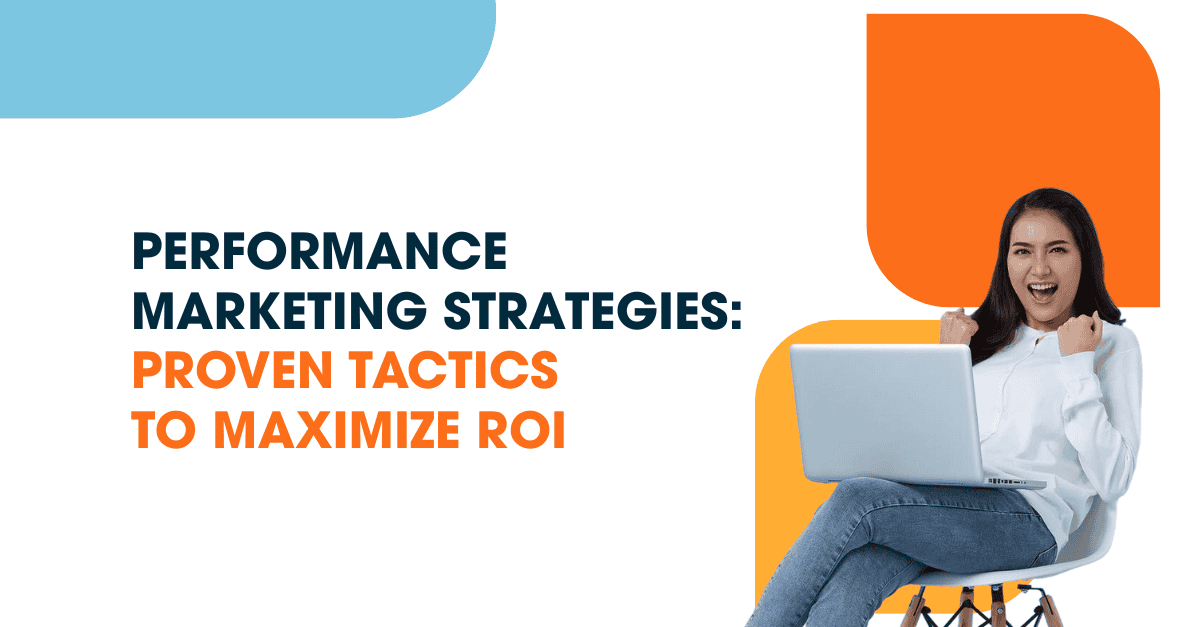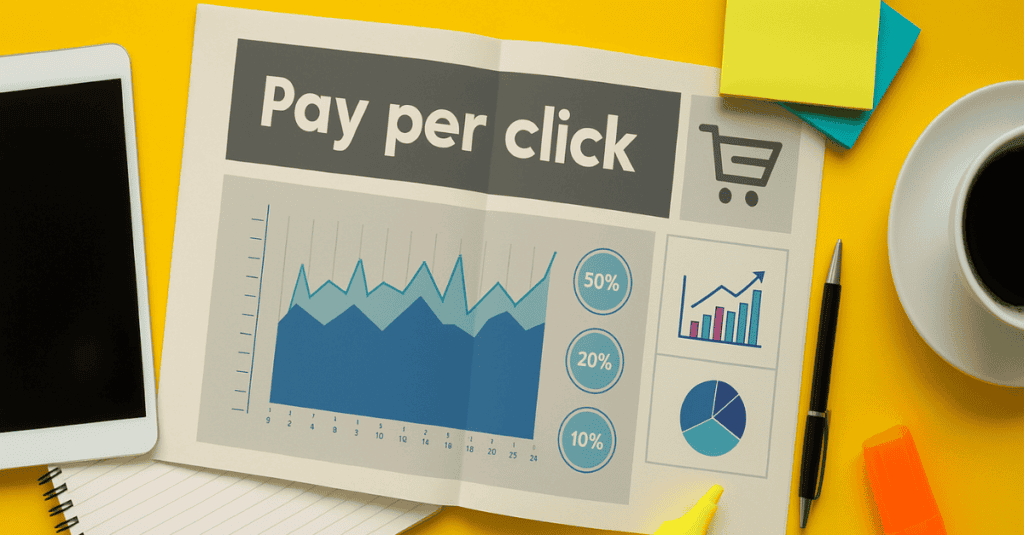
Performance Marketing Strategies: 9 Proven Tactics to Maximize ROI
What if your marketing budget only paid off when it actually… paid off? That’s the promise of performance marketing—a smarter, data-driven approach where advertisers pay only when someone clicks, signs up, or buys. No guesswork. Just clear results tied to every dollar spent.
Unlike old-school brand marketing that hopes for attention, performance marketing focuses on outcomes you can track, tweak, and scale. It’s not about how loud your message is—it’s about how well it performs. Here’s the kicker: 62% of marketers say performance marketing outperforms traditional methods, and businesses using data-backed strategies see 30% faster revenue growth. Not bad, right?
In this guide, you’ll learn 9 punchy performance marketing tactics and strategies built to drive real results—plus how to optimize each one without wasting a cent. Curious how the pros do it? Keep reading—your next high-converting digital marketing campaign might be one scroll away.
9 powerful performance marketing strategies
1. Pay-Per-Click (PPC) Advertising – Driving Instant Traffic

If you’re looking to get in front of potential customers fast, PPC advertising is the fast lane. In this model, advertisers pay only when someone clicks on their ad—not just when it’s seen. Whether you’re targeting a niche search term or a broad audience, you’re paying for real engagement, not empty views. The real magic lies in the placement. With Google Ads, your campaign can appear directly on search engine results when someone is actively looking for what you offer. Bing Ads give you similar reach with less competition and typically lower cost per acquisition, while YouTube Ads turn passive viewers into action-takers through visual storytelling on one of the most engaging digital channels.
But visibility alone doesn’t guarantee success. Smart performance marketers dig into the details—refining keywords, split-testing ad copy, and setting clear campaign objectives. Using long-tail keywords helps you reach specific audiences at a lower cost per click, while negative keywords block out irrelevant traffic that drains your ad spend. And if you’re not running regular A/B tests on your landing pages? You’re leaving clicks—and conversions—on the table.
Here’s a stat to remember: Businesses earn an average of $2 in revenue for every $1 spent on PPC. It’s no wonder performance marketing campaigns lean heavily on PPC to boost website traffic and hit business goals quickly. Done right, PPC isn’t just another tactic—it’s one of the sharpest tools in your performance marketing program.
2. Cost-Per-Action (CPA) Marketing – Performance-Based Affiliate Campaigns
Not all clicks are created equal—but actions? That’s where the real value lies. If you’re tired of paying for traffic that doesn’t convert, Cost-Per-Action (CPA) marketing flips the model. You only pay when a user completes a specific goal—like filling out a form, signing up for a trial, or making a purchase. This performance marketing strategy is built for outcomes, not fluff. And it’s why so many marketing companies lean on CPA to boost ROI. Rather than buying eyeballs, you’re teaming up with affiliate marketers who get rewarded only when real results happen. It’s the purest form of performance-based marketing—and it works.
Certain niches thrive in the CPA world. E-commerce campaigns with discount codes see fast traction. Nutra products, like supplements and wellness solutions, perform well on mobile. And in finance, offers like credit card applications or loan quotes can yield serious commissions. Platforms like YepAds bring together high-converting CPA offers across verticals like insurance, health, and mobile apps—giving affiliates and advertisers access to campaigns that are built for performance, not promises.
When paired with a clear digital marketing strategy, these programs help track various performance metrics, control customer acquisition costs, and scale faster than traditional marketing campaigns. CPA isn’t just one of many types of performance marketing—it’s a reliable growth lever when you want conversions without the upfront risk. For brands looking to improve performance while staying lean, this model speaks your language.
3. Retargeting Ads – Re-Engaging Potential Customers
Ever browsed a product, clicked away, and suddenly started seeing it everywhere? That’s not a coincidence—it’s retargeting in action. This clever digital marketing strategy doesn’t chase cold leads; it reconnects with people who already know your brand but didn’t convert the first time. Instead of letting those visitors slip through the cracks, performance marketing focuses on bringing them back—at just the right time.
Retargeting ads, also known as remarketing, follow these users across social media platforms, search engines, and websites, nudging them to take that final step. And it works: retargeted ads convert 10x better than standard display ads. Tools like Facebook Pixel let you track website visitors and serve ads that match their behavior. Over on the Google Display Network, banner ads retarget users while they browse other sites. Both platforms are powerful performance marketing channels for keeping your brand top of mind.
To get the most from retargeting, personalize your message. Segment your audience by behavior—like cart abandoners or product viewers—and show them ads that actually matter. Add time-sensitive offers to create urgency and use frequency caps to avoid overwhelming your audience. In the world of performance marketing work, retargeting isn’t just a tactic—it’s your second chance to close the deal. When paired with your broader online marketing efforts, it keeps your brand visible, relevant, and just a click away from conversion.
4. Social Media Advertising – Targeting High-Intent Audiences
Scroll. Pause. Click. Buy. That’s the customer journey on social media platforms today—and for performance marketers, it’s pure gold. With billions of users sharing everything from their favorite hobbies to their job titles, social media advertising hands you something traditional advertising platforms can’t: precision. Platforms like Facebook, Instagram, TikTok, and LinkedIn let you target specific audiences based on interests, behavior, and even buying intent—making them key players in any performance marketing program. It’s no surprise then that 60% of all e-commerce sales are driven by social media ads. That’s not just reach—that’s campaign performance with real results.
Facebook and Instagram Ads dominate in the e-commerce space, especially for lead generation. TikTok Ads spark high engagement through creative, viral content, while LinkedIn Ads shine in the B2B world with direct access to decision-makers. To improve performance, go beyond basic targeting. Tap into lookalike audiences to scale your reach without diluting quality. A/B test your creatives—images, videos, headlines—so you’re always leading with what converts best.
And don’t underestimate video: it consistently drives higher interaction across social media marketing campaigns. In a world where attention is currency, social media advertising isn’t just a tactic—it’s a powerhouse channel for digital advertising, especially when aligned with your broader marketing strategy. Done right, it brings in high-intent traffic and turns browsers into buyers—right where they scroll.
5. Native Advertising – Blending Ads into Organic Content
Ever found yourself deep into an article, only to realize it’s sponsored content? That’s the quiet power of native advertising—ads that don’t look or feel like ads, yet drive serious results. While traditional display banners often get ignored, native ads blend seamlessly into the page, appearing as suggested stories or editorial recommendations across digital channels like Taboola and Outbrain. They follow the format of the site they appear on, making them feel like part of the user experience—perfect for content marketing campaigns designed to build trust. And the numbers speak for themselves: engagement with native ads is 8.8 times higher than with standard display ads. That kind of lift can transform the effectiveness of your performance marketing strategies, especially when targeting users in research or discovery mode.
Industries like finance, insurance, health and wellness, and digital learning products are thriving in this space. These niches benefit from soft-sell approaches where information and context matter more than bold, flashy promotions. When paired with smart segmentation and strong storytelling, native advertising becomes a subtle but highly effective driver of conversions.
It helps performance marketers reach specific audiences at just the right moment—boosting campaign performance without disrupting the flow of content. If you’re looking to engage rather than interrupt, native ads might just be your best-kept secret.
6. Search Engine Optimization (SEO) – Long-Term Performance Growth

Not every win in performance marketing has to be instant—some of the most powerful results come from the quiet, consistent climb up the search engine rankings. That’s where search engine optimization (SEO) steps in.
While PPC and paid advertising give you speed, SEO offers sustainability. By creating high-ranking content that drives free, organic traffic month after month, you’re not just improving visibility—you’re building a performance marketing strategy with serious staying power.
In fact, SEO-driven websites see 5x higher ROI than paid ads over time. To make SEO work as part of your broader digital marketing campaign, you’ll want to think beyond basic blog posts. Start with SEO-optimized landing pages for your CPA offers, focusing on user intent and conversions. Long-tail keywords bring in users who know what they want—making them easier to convert. And since Google now considers mobile usability and page speed critical, optimizing those factors isn’t optional; it’s foundational.
For performance marketers, SEO isn’t just a content play—it’s a way to reduce customer acquisition cost, drive qualified traffic, and scale growth without constantly increasing ad spend.
7. Conversion Rate Optimization (CRO) – Maximizing Campaign Performance
Getting clicks is only half the battle—the real win comes when a visitor takes action. That’s where conversion rate optimization (CRO) becomes your secret weapon. It turns passive traffic into real results, making every dollar of your ad spend work harder. In the world of performance marketing, CRO is the bridge between website traffic and actual revenue.
You’ve already brought users to your page through paid search, email marketing, or social media advertising—now it’s time to make every visit count. Even small tweaks can lead to big gains. For example, a 1-second delay in load time can cut conversions by 7%—which adds up fast. To improve performance, start with A/B testing your landing pages and calls-to-action. Which headline makes users stay? What color button converts better? The answers are in the data. Next, focus on speed—optimize image sizes, reduce scripts, and make sure your pages load lightning fast across all digital channels.
And don’t forget about trust. Adding customer reviews, security badges, or guarantees helps lower resistance and makes your target audience more likely to convert. When combined, these tactics don’t just make your site prettier—they make it more profitable. As performance marketers, your job isn’t just to drive traffic—it’s to turn that traffic into customers. CRO ensures your marketing campaigns are built to convert, not just impress.
8. Influencer Marketing – Leveraging Audience Trust for Conversions

When a friend recommends a product, you listen. That’s exactly why influencer marketing works—it blends authenticity with reach, making it one of the most effective tools in the performance marketing playbook. Today’s target audience is smart. They scroll past traditional digital advertising, but they’ll pause for someone they follow and trust. And with good reason: influencer marketing delivers 11x higher ROI than standard digital ads. It’s not about celebrity hype—it’s about real voices creating real impact. Platforms like Instagram and TikTok dominate for lifestyle brands and e-commerce, offering visual storytelling that drives clicks and conversions.
Meanwhile, YouTube remains a go-to for detailed product reviews and long-form content that moves people from interest to purchase. For performance marketers, success isn’t just about reach—it’s about results. That’s why the smartest campaigns use affiliate links and promo codes to track performance in real time. Working with micro-influencers can also yield stronger engagement, especially when targeting specific audiences within niche communities. Fold this into your broader marketing strategy, and you’re not just increasing visibility—you’re building credibility that converts. In a world full of noise, influencer marketing offers something rare: trust that drives action.
Scale Your Performance Marketing with YepAds
Tired of spending big on ads without seeing results? It’s time to run smarter, not harder. At YepAds, we connect you with high-converting performance marketing campaigns across search, native advertising, social media platforms, and more—so you only pay when you see real action.
Whether you’re aiming for more leads, sales, or app installs, our platform gives you full control over your marketing efforts with access to advanced targeting, reliable tracking, campaign data, and top-performing global traffic. Plus, with our expertise in CPA, pay-per-call, and content marketing, you’ll always be plugged into what’s working right now.
Join thousands of advertisers who are scaling fast, spending smarter, and hitting their business goals with YepAds. Ready to grow revenue with performance that actually performs?
Start here and launch your first campaign today.
FAQs
What can performance marketing help a business do?
Performance marketing helps businesses grow by focusing on measurable actions—like clicks, sign-ups, or sales. Instead of paying for exposure, you pay for results. It’s a cost-effective way to boost website traffic, reach your target audience, and improve customer acquisition costs across digital channels like search, social, and affiliate marketing and networks. For brands aiming to scale without overspending, it’s a powerful tool.
How difficult is performance marketing?
Getting started with performance marketing isn’t hard—but mastering it takes strategy. With so many performance marketing channels and platforms like Google Ads, social media advertising, and affiliate marketing, it can feel overwhelming at first. But with the right tools, data, and partners (like YepAds), you can launch, test, and track performance easily—even if you’re new.
What services are under performance marketing?
Performance marketing includes a range of tactics like PPC advertising, CPA campaigns, influencer marketing, native ads, affiliate marketing, retargeting, and even paid search marketing and engine optimization. All of these are focused on driving specific, trackable outcomes—and ensuring advertisers pay only for completed actions.
Is performance marketing under digital marketing?
Yes—performance marketing is a subset of digital marketing. While digital marketing includes everything from brand marketing to social media content, performance marketing is result-driven. It prioritizes key metrics, conversion tracking, and ROI, making it ideal for businesses focused on growth and accountability.
